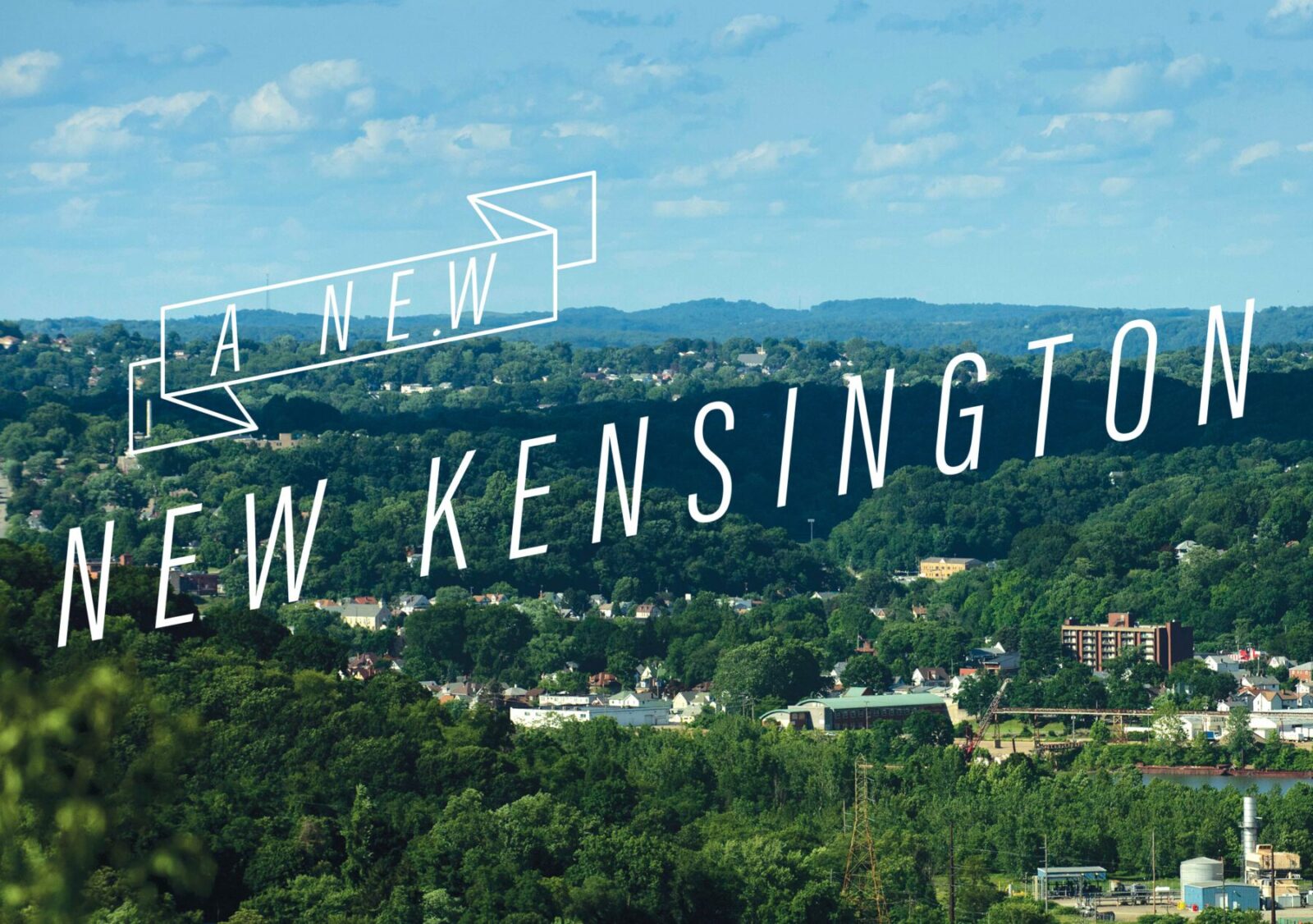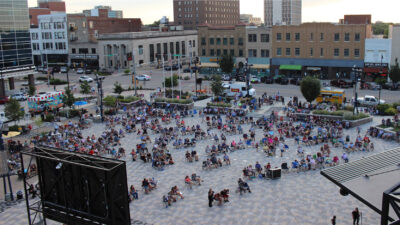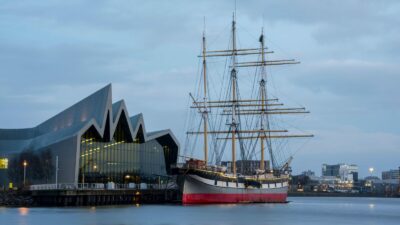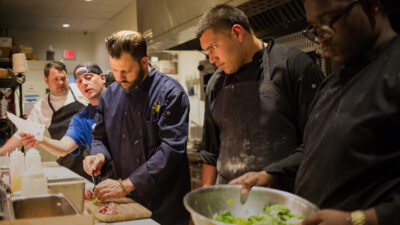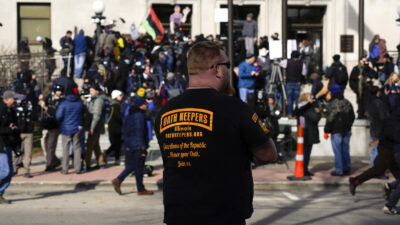The concept first came to Kevin Bode during a mission trip with his church to the Dominican Republic.
While aiding that country’s hungry and poor, Bode began thinking about how he might help the needy back home in Pittsburgh’s postindustrial suburbs.
Their “need” inspired Bode and his wife, Mary, to create Southwestern Pennsylvania’s first pay-what-you-can restaurant: the Knead Community Cafe.
Unlike your typical soup kitchen, the Knead caters to the haves and have-nots alike, providing meals to every customer whether or not they can pay. Those who can afford to pay for their meals are encouraged to give a little extra to cover others who are struggling. The Bodes also ask folks to help out in the kitchen or clean up in the dining room if they can’t pay for their meal.
Since opening in 2017, the five-days-a-week cafe has proven popular with both locals and out-of-towners. On a recent afternoon when the Knead was serving fish tacos and other healthy, tasty options, more than a dozen patrons in the sun-drenched dining room were serenaded by a guitar player while they ate. The Knead serves about 75 people a day, Bode said.
“We wanted to make it really nice so it doesn’t look like a soup kitchen and people can dine with dignity,” he said, while showing off a refurbished former movie theater, next door to the dining room, that serves as Knead’s banquet hall for larger events.
“That’s what attracted me to community cafes,” Mary added. “Everyone deserves to eat good food.
“We wanted to appeal to everybody, to help those with means to help out those with little means.”
The cafe has proven so popular with residents of New Kensington, a once-prosperous and lively industrial town less than 20 miles from Pittsburgh, that it’s inspiring other efforts to revitalize a historic downtown featuring century-old buildings with a colorful past.
The city was home to one of the strongest mid-20th-century economies in the Steel City’s surrounding suburbs and exurbs.
The population doubled from 1920 to 1950, reaching a high of more than 25,000 people, according to the U.S. Census.
Companies in the oil and gas, lumber, dairy, milling, and brewing sectors flocked there to employ workers. Vibrant immigrant communities developed, attracted by employment opportunities.
But like much of the Rust Belt in the 1970s and 1980s, those companies found cheaper labor elsewhere, and New Kensington slid into economic decline as the city’s largest employers closed or relocated.
About half the population fled and, since then, the residents — about 13,000, according to 2010 U.S. Census figures — have searched for solutions to the city’s rising unemployment, spiking crime rates, and a general sense of hopelessness pervading much of the community.
But just when it seemed there was no hope for the city, a group of eager innovators and community activists such as the Bodes, along with local government leaders, took up the task of revitalizing the city locals call “New Ken.”
Aiding in their efforts is Bridgeway Capital, a community development lender that provides flexible capital and growth opportunities that help businesses and nonprofits — such as Knead and others in New Kensington — gain access to funding that would not be available to them through more conventional banking and lending institutions.
“Bridgeway helps ignite economic opportunity in disinvested areas like New Kensington,” said Dawn Seckler, associate director of development for Bridgeway Capital. “We see New Ken as a place of opportunity for Bridgeway’s mission-driven investments to support small business owners, main street development, and the revitalization of industrial real estate.”
“We’ve had our bumps and bruises, but we still somehow find our way,” said New Kensington Mayor Tom Guzzo.
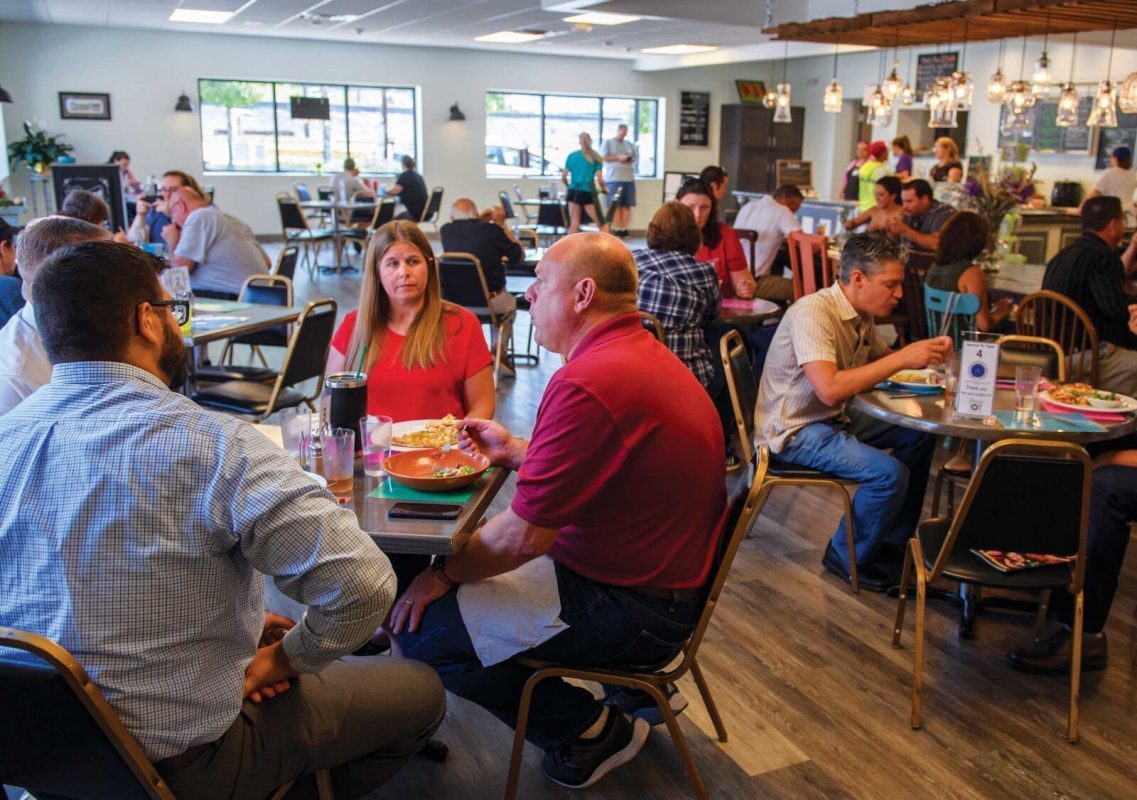
Down the street from the Knead is Kafa Buna, which in the Amharic language native to Ethiopia roughly translates to coffee (buna) from the country’s southwestern region of Kafa, where, legend has it, coffee was first produced.
Mengesha Abtew opened the cafe in 2016 with the help of a business loan from Bridgeway Capital. He’s been brewing delicious roasts from his native Ethiopia ever since.
His cafe has become a mainstay for students at the nearby Westmoreland County Community College branch campus and others from the neighborhood.
“The students like to come in here, hang out and study,” Abtew said. “Plus we’ve made a lot of friends in town that have become regulars.”
In addition to being a favorite coffee haunt in New Kensington, Kafa Buna also hosts local musicians, features photography and paintings from area artists and occasionally hosts stand-up comedians on its small stage.
Not every new business in New Kensington is located in the old downtown. The city boasts three distinct business districts and a handful of other commercial enclaves.
Just a few miles outside of the old downtown, atop scenic Coxcomb Hill overlooking the meandering Allegheny River, is Veltre’s, a longtime event space and banquet hall that’s hosted weddings, high school proms, and other celebrations for more than 40 years.
A few years ago, Anthony Veltre and his wife, Donna, bought the New Ken institution from the “Veltri” family, thinking the similarities of their names would allow him to keep the faithful patrons of the previous owner. He managed to keep the customers — and grow the business — but not without paying a price.
“I just had to change one vowel on the sign, but it was an expensive vowel,” he said, laughing.
With help from Bridgeway, Veltre has expanded his business to offer off-site catering, a service he calls Just My Cup of Tea.
He’s now catering and hosting about 180 events a year and growing.
“We’re doubling our business every year as more people get to know what we’re all about,” he said, while preparing for a busy weekend when Veltre’s was hosting a wedding, a high school prom, and a memorial service for the recently departed.
Business is so good, in fact, Veltre is considering other potential uses for the 10.5 acres of prime real estate atop one of the highest points in the city.
“If we keep doing what we’re doing, maybe I’ll develop the land next to me,” he said.
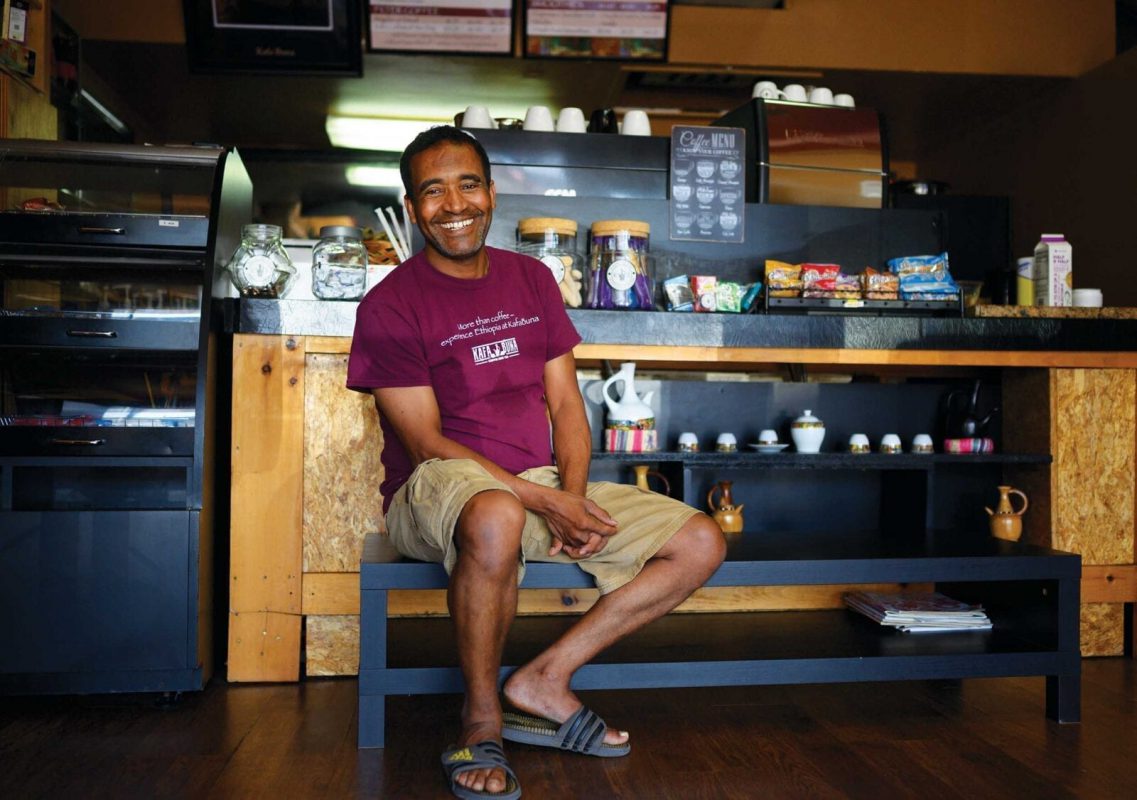
New Kensington may be a small town, but its outsized and colorful history predates the Revolutionary War.
The first European explorers arrived in what is now New Kensington in about 1669, discovering a fertile floodplain along the Allegheny River that was already home to Native Americans.
Local historian and journalist George Guido chronicles the tale of the city in his book, “New Kensington: The Photographic History.”
In it are photos of the newly-incorporated city along the river as it looked in the 1890s, when the first plots of land were sold for residential and commercial use.
Around the same time, the then-fledgling company Alcoa, which developed cheaper, faster ways to make aluminum for commercial use, relocated from Pittsburgh to New Kensington.
Production and design centers were built and quickly flourished, producing raw aluminum and aluminum products such as its revolutionary lightweight and rustproof tea kettle, an innovation that not only made Alcoa famous, but its new home of New Kensington as well.
“Alcoa was the linchpin to get New Kensington going,” Guido said.
New Kensington became known as the “Aluminum City,” employing thousands of native-born Americans and immigrants, mostly from Southern and Eastern Europe.
By the end of World War I, New Kensington was booming, with new homes going up at a steady rate to meet the demands of a growing population.
By the time the United States entered World War II, New Kensington was the world’s leader in aluminum production, which increased even more during the war. It’s said some 7,500 people from New Kensington were employed by Alcoa at that time, nearly a third of the population.
Those who didn’t work for Alcoa also found ways to benefit from the economic boom.
Longtime attorney and New Kensington city solicitor Jim Kopelman has family roots dating back to the city’s early days.
Kopelman’s relatives first arrived in the city from their native Lithuania in the 1890s. His grandfather, Haiman, chose New Ken because “it was one of the fastest-growing cities in the United States” at that time, said Kopelman, recalling the stories that have been handed down in his family.
Immigrants could find work in the mines and factories, though a young Haiman chose to go into the retail business. He started out selling wares from a bag as a “pack peddler,” as they were known in those days.
After several years of hard work and saving money, Haiman became the owner of two department stores.
“My family is a mirror of the town of New Kensington,” he said with pride. “When the city prospered, the family prospered.”
His father, Nathan Austin Kopelman, became a doctor and built a successful practice in the city. Nathan wanted his son to follow in his footsteps, but he preferred law school to dissecting cadavers.
“His success was directly related to the industries in New Kensington, as were others,” Kopelman said.
Alcoa spurred much of that prosperity. The world-leading aluminum manufacturer headquartered its production facility and laboratory in the city for decades.
When Alcoa closed its plant in New Kensington in 1972, the city started its inevitable decline.
“It was like someone cut the heart out of the community,” Kopelman said.
Despite its decline, Kopelman still recalls fondly those famous personalities that came out of the city.
Among them are the National Football League’s first black quarterback, aptly named Willie Thrower. Other notables from the city include the war photographer and Pulitzer Prize-winner Eddie Adams, as well as Johnny Costa, the famed jazz pianist who for decades worked as the musical director on the children’s show “Mister Rogers’ Neighborhood.”
The city also had a cast of characters who, while famous in their own right, were better known for less-reputable reasons, namely organized crime. Gambling, prostitution, and liquor during Prohibition were the mainstays of the New Ken mob. Anytime day or night, these and other vices could be found in secret rooms stashed behind the city’s storefronts.
For decades, New Kensington was the seat of power for mafiosos such as the Mannarino crime family and others, earning the city the nickname “Little Chicago.” But their criminal enterprises extended well beyond Western Pennsylvania, with the family reportedly having an interest in a Havana, Cuba, casino in the 1950s.
And when Fidel Castro and his revolutionary forces took over Cuba, local legend has it that a meeting between the new Cuban leader and local mafia bosses took place at a nearby |bar controlled by the mob to discuss the future of the Caribbean nation.
But their hearts and most of their business interests remained in New Kensington, which continued to thrive.
“One thing about those guys (the mob), they knew which areas were growing,” Guido noted.
The mafia’s influence, however, began to wane with the fortunes of the city. In the 1970s, Alcoa left downtown New Kensington and its laboratory up the hill closed. At the same time, the U.S. Department of Justice was cracking down on organized crime across the country. By the 1980s, the city’s heyday — and that of its mafioso — was in the rearview mirror.
Today, the old mafia legends are fading from memory.
Still, every once in a while, New Ken residents tell tales with a wink. When Bode was looking at buildings for his pay-what-you-can restaurant, the old theater he chose to use for banquets was once used by mobsters as a hangout of sorts. Other buildings he saw had similar histories.
“I must have looked at 20 buildings,” he said. “And 15 of them had secret rooms,” he added, laughing.
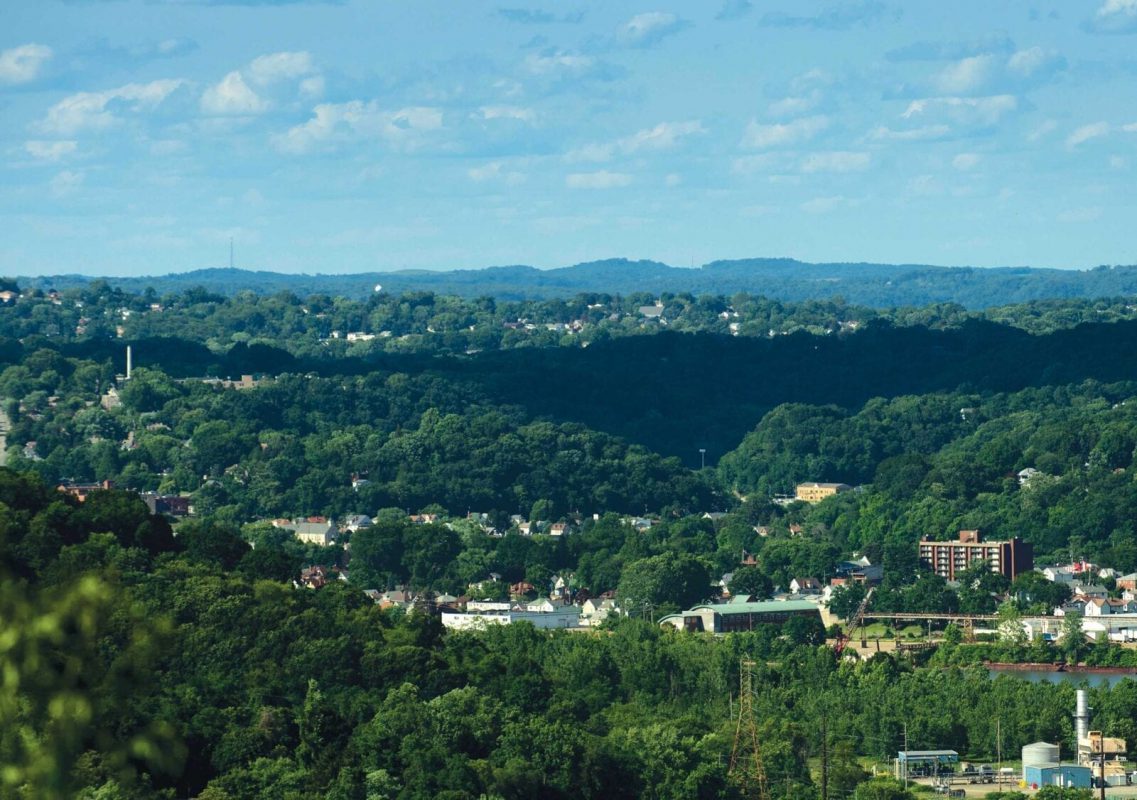
Fast-forward to the present: Citizens of New Kensington still celebrate their past but are hopeful for the future. Mayor Tom Guzzo is among those cheerleading the city’s potential.
“It still has all the bones of being a nice place to live and raise a family,” said Guzzo, while rattling off the city’s many assets including a marina, several parks, and loads of affordable, well-built homes that cost a fraction of equivalent real estate in Pittsburgh.
Still, crime and other social ills remain a problem. in 2017, a New Kensington police officer was killed in the line of duty. In May, an elderly man delivering the local newspaper just before dawn was fatally shot. Homelessness and poverty are nagging problems that still need to be addressed. About 23 percent of the population lives below the poverty level, according to the U.S. Census.
“We’ve had our bumps and bruises, but we still somehow find our way,” the mayor said.
Chris Briem, a regional economist with the program in Urban and Regional Analysis at the University of Pittsburgh’s Center for Social and Urban Research, said that communities such as New Kensington face additional challenges that make revitalization difficult, though not impossible.
Briem noted how fragmented government structures are in a region once so dominated by heavy industry that those same businesses played a major role in determining the borders of towns and cities such as New Kensington.
“We have a government structure (in Western Pennsylvania) that evolved out of an industry that no longer exists,” said Briem, adding that state and federal governments “don’t help regions in decline adjust.”
Other cities adjacent to New Kensington—namely Arnold and Lower Burrell—face similar challenges such as shrinking populations. Combining their resources into one restructured city makes sense on paper, though there is little enthusiasm in the respective cities for any such initiative.
Briem suggested that doing so, however, would make the region more attractive to economic opportunity and would-be residents alike.
“Larger regions can breed larger diversity” of people, ideas, businesses, and other opportunities, he said.
“Smaller regions (such as New Kensington) can’t breed that kind of diversity, so when the industry is in decline, you’re stuck.”
Despite the challenges New Kensington faces, there are those who believe enough in the community and its potential to attempt a reinvention of the city, much of it based on emerging technology.
The city recently purchased the Schreiber Industrial Park that once housed Alcoa, and local leaders are trying to attract high-tech manufacturing to the area.
Mayor Guzzo also oversaw the recent creation of the “Corridor of Innovation,” several commercial blocks along Fifth Avenue that are designated for attracting small and start-up tech companies. The anchor locale on the corridor is The Corner, a tech and innovation incubator that is the creation of the New Kensington branch of Penn State University.
The recently renovated co-working space offers offices and conference rooms for start-up and visiting businesses.
“We were looking for a way to help revitalize New Kensington,” said Kevin Snider, chancellor at Penn State’s New Kensington campus, about the school’s impetus for creating the co-working space.
“We’re really very excited because it’s going to position this area for growth.”
The Corner — which is one of 21 Invent Penn State hubs statewide — is already helping make that happen.
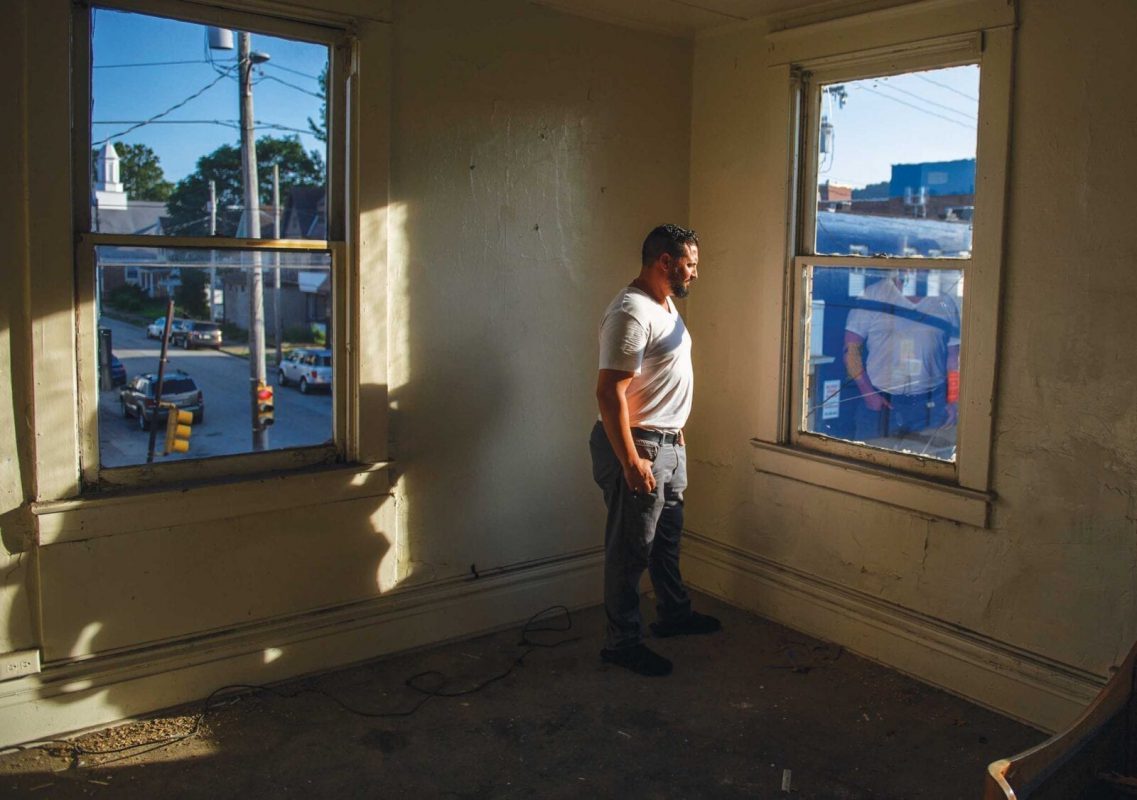
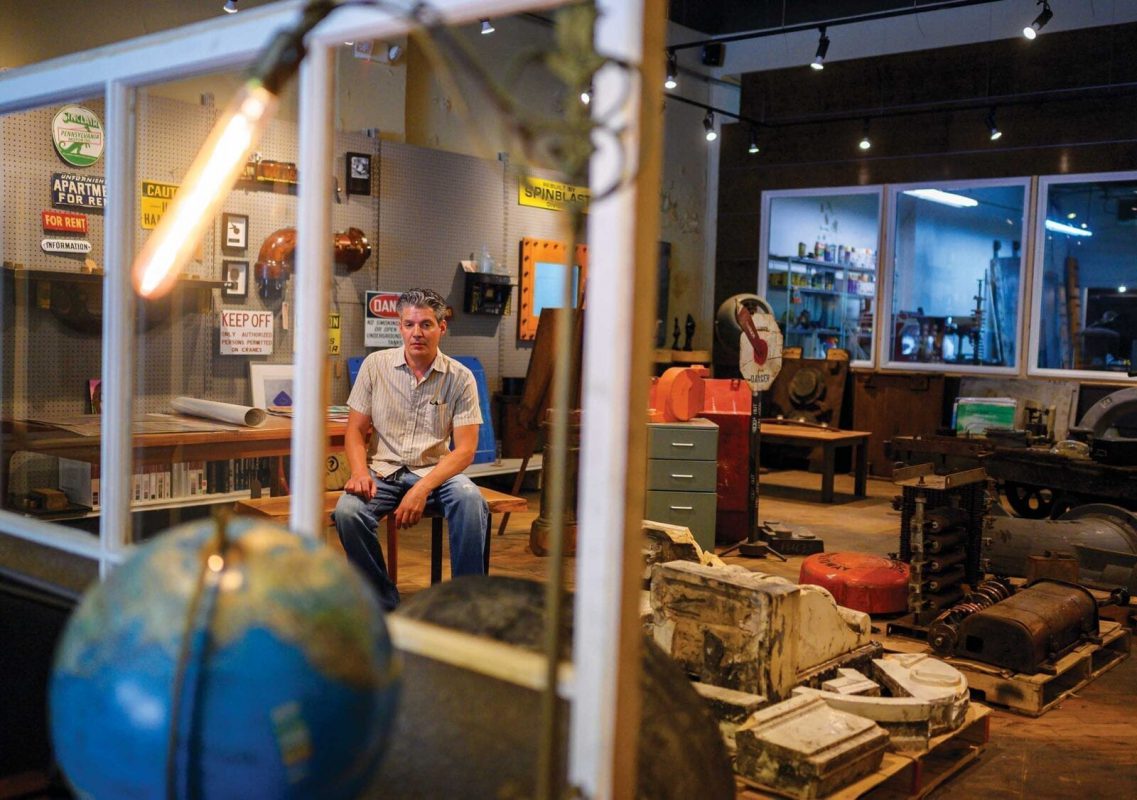
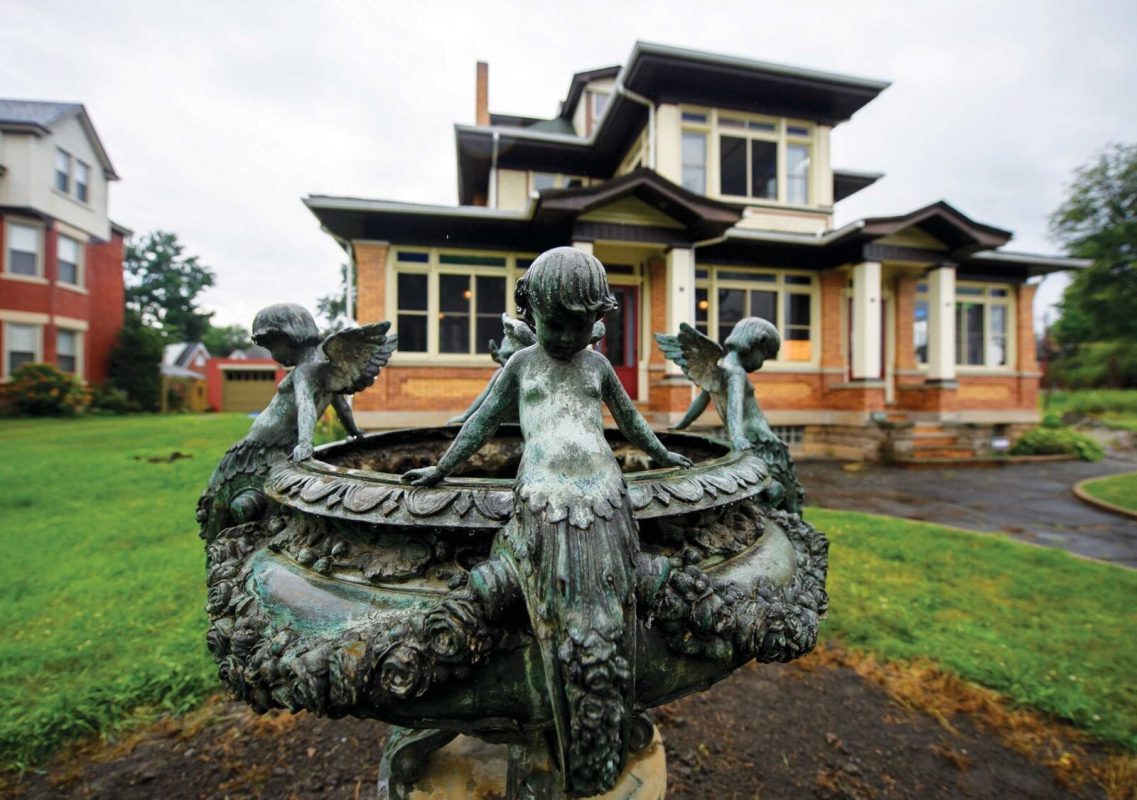
“I don’t want to be a bystander,” said entrepreneur Sean Watson. “If I’m not helping grow it (New Kensington), then I’m pulling it down.”
Entrepreneur Sean Watson rents space to house his architecture and building material business: sustain-ABLE matter(s).
His business’s unconventional name is perhaps emblematic of Watson’s outside-the-box thinking when it comes to doing business in New Kensington. Not only is he headquartered along the Corridor of Innovation, but he’s invested in its real estate.
Just across the street from The Corner, Watson purchased a two-story building with numerous storefronts and a half-dozen apartments upstairs. The building is in need of repair and restoration. Watson sees his purchase not only as smart business but part of his civic duty.
“I don’t want to be a bystander,” he said. “If I’m not helping grow it (New Kensington), then I’m pulling it down.”
Watson’s friend and fellow Corridor business owner Corey Pistininzi agrees. As the owner and operator of Modfinish, a design store that incorporates industrial elements into modern furniture and other home adornments, Pistininzi is deeply invested in the well-being of the city. His store contains old doors and stonework from demolished buildings, as well as industrial wood patterns that were used in fabricating metal products like those once produced
by Alcoa.
Not only is Pistininzi doing business along the Corridor, but he recently invested in the historic Bloser Mansion, a three-story house once owned by a prominent New Kensington jeweler. Pistininzi plans to turn the mansion into a multi-faceted entertainment venue serving food and libations. He’s already renting one of the newly refurbished rooms on Airbnb.
“I used to live in downtown Pittsburgh, but I was out here for a project and just fell in love with the city’s potential,” he said. “I told my wife that ‘if we’re going to live here, then we’re going to help make it better.’”
Pistininzi said he’s already seen many improvements in the everyday life in New Kensington in recent times.
“Five years ago, in downtown, you’d see tumbleweeds … now, the energy and amount of people involved (in improving New Kensington) can’t be stopped.”
Others investing in the city seemingly see the same potential. Real estate developer Michael Malcanas has acquired a dozen buildings along the Corridor and is overseeing the restoration of what was formerly an ornately designed movie house into a restaurant and brewpub.
His father did business in New Kensington for decades before Malcanas went into business in the area, providing building insulation for commercial and residential spaces.
But Malcanas wasn’t interested in New Kensington’s old buildings until more recently, first as an owner of residential properties and now a portfolio of commercial spaces along
the Corridor.
“I’m not a big master-plan guy,” said Malcanas sheepishly, while surveying the progress on the renovation of the interior of the new Voodoo Brewery, the latest in a chain of Voodoo breweries in the region. “But I think I can make some changes happen.”
Malcanas and business partner Jake Voelker hope that their brewpub will convince other people that the Corridor, and New Kensington as a whole, are a worthwhile investment.
“I could be a hero or a zero,” Malcanas joked. “I hope I’m a hero.”
His optimism appears to be catching on in New Kensington after years of despair and decay. Guzzo, too, is among those who see the city turning a corner toward a new era of prosperity.
“The next couple of years are going to be exciting,” he said.

